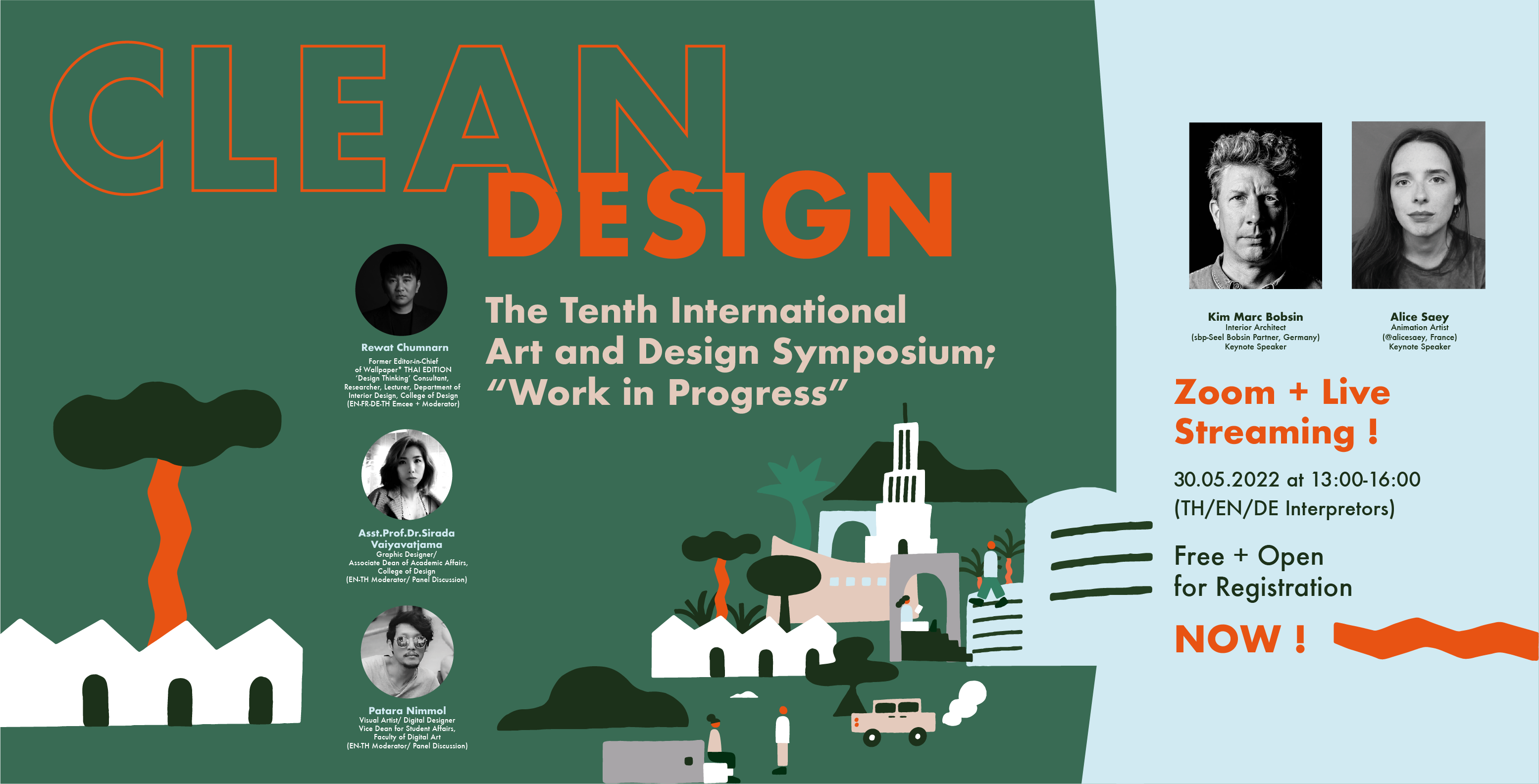
The Tenth International Arts and Design
Symposium “Work in Progress”
founded by Council of Arts and Design Deans Council of Thailand (CADDT) together with College of Design, Faculty of Digital Arts, Rangsit University.
This year we welcome the Faculty of Architecture and the Conservatory of Music, Rangsit University to collaborate with us in organizing the event. International Arts and Design Symposium “Work in Progress” is an international forum for scholars, designers and artists from various fields to share their works in progress.
Call for Papers We warmly welcome to submit your arts & design works and research papers this year and please submitted by April 30, 2022. Instructions for submission are available at: www.rsu-workinprogress.com/registration
Topic this year
“Clean Design”
Executive Committees
1. Prof.Ekchart Joneurairatana
(Silpakorn University, Thailand)
2. Prof.Kamol Phaosavadi
(Chulalongkorn University, Thailand)
3. Assoc.Prof.Pisprapai Sarasalin
(Dean of College of Design, Rangsit University, Thailand)
4. Somchai Jongsaeng
(Silpathon Award in Design, Thailand)
5. Chookiat Likitpunyarut
(Senior designer and artist, Designer of the year committee, Thailand)
6. Jitsing Somboon
(Head of Designer, Greyhound, Thailand)
7. Assoc.Prof.Dr.Tan Jeanne
(Institute of Textiles & Clothing, The Hong Kong Polytechnic University, Hong Kong)
8. Franyo Aatoth
(Artist Creator of exceptional graphic works, France)
9. Geri Forkner
(Textile Artist, USA)
10. Prof.Kaname Yanagisawa
(Architect, Chiba University, Japan)
11. Prof.DeDeniz Hasidic
(İzmir Ekonomi Üniversitesi, Turkey)
12. Prof.Kent Solomonsson. Ph.D
(Jonkoping University, Sweden)
13. Asst. Prof. Sudjit Svetachinta Sananwai, Ph.D.
(Rangsit University, Thailand)
14. Nontawat Charoenchasri
(Ductstore the Design Guru, Thailand)
15. Prof. Kemas Ridwan Kurniawan, Ph.D.
(Universitas Indonesia, Indonesia)
16. Dr. Julie Nichols
(University of South Australia, Australia)Project Descriptions
“Designer” are the weavers of “extraordinary creative ideas”. The end product of their creative work is the synthesis of imaginations and dreams built into reality.
Humans possess creative thinking ability. Our ways of thinking and acting are so powerful – they can create positive and negative impacts to the world. And one of the most brilliant tools to tackle all the current nightmares happening in the world is “Design Thinking”.
“Clean Design” is the source of a good and fulfilling life where human users can reach their hedonistic sustainability. This approach, once applied extensively, will ultimately lead to sustainable urban development as well as design works that enrich human imagination for generations to come …
Clean design is portrayed through design forms and the environment designed into clean- design-shaped space. The relationship between the architecture and human is the key element to the design. The clean environment within the radius of clean-design-shape space is free from pollution and contagious diseases. Such public space invites humans to think, discuss and create “Now Normal Lives” together.
Additionally, design thinking process should be implemented beyond the radius of this clean-design-shaped space so that we can achieve a good and sustainable Now Normal way of life in a broader sense.
Keynote Speakers
Kim Marc Bobsin
(Interior Architect, Co-Founder of Sbp-Seel Bobsin Partner, Hamburg, Germany)
Alice Saey
Visual Artist, @burnisaey, Netherlands
Judging Panel
Artists, Professionals in art and design expertise.
Inviting Artists
Artists, Professionals and Academic Experts in art and design expertise.
Deadlines
Creative work submission deadline: April 22nd, 2022
Research paper submission deadline: April 30th, 2022
Final decision announcement by Judging Panel
May 9th-12nd, 2022